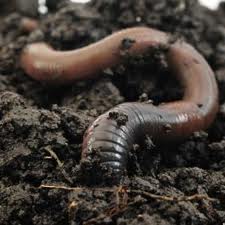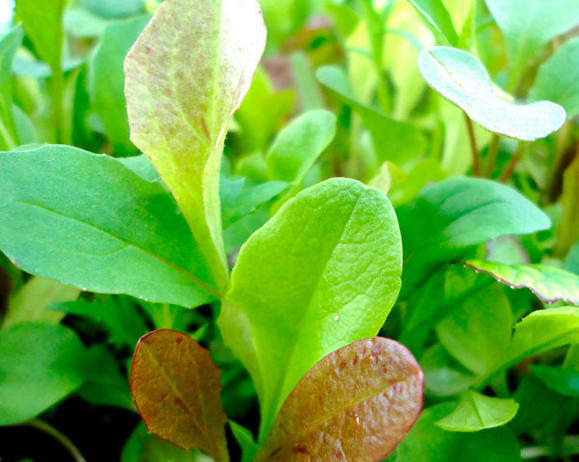Nutrition
While many think of earthworms
solely as decomposers, most night crawlers, including
Lumbricus terrestris, rely heavily on herbivory, but it doesn't just stop there. Earthworms are very
un-fastidious eaters. In fact, these worms will eat just about
any organic material. While taking a special liking to dead
leaves and other dead plant material, they will also feed on dead animals,
living plants, soil, and even animal
droppings (Griffith et al. 2013). Though these organisms are not carnivores, they will
even accidentally feed on tiny live animals that are present in
the soil occasionally (Encyclopedia of Life 2013).
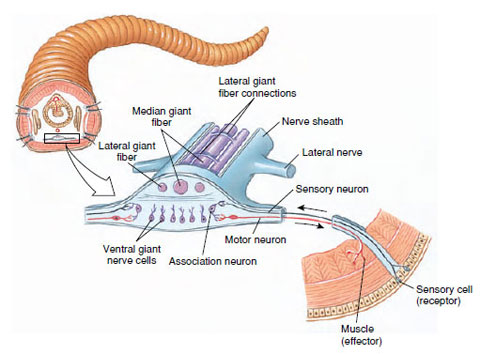
See No Food, Hear No Food, Eat
No Food?
L. terrestris, as well as all other earthworms,
have neither eyes nor ears (Encyclopedia of Life 2013). Instead, they
The figure to the right is showing where sensory receptors are
located in earth worms. In more detail, it also portrays the flow of
impulses that are transmitted.
Beware of the Toothless Worm!
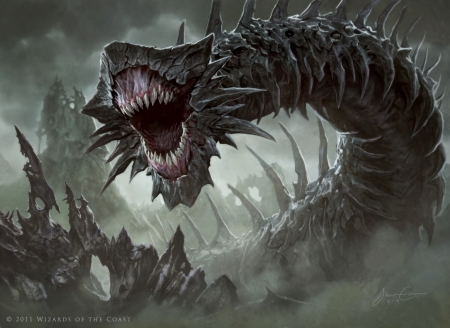 As
seen in Peter Jackson's version of Skull Island in King Kong (2005),
most of us have witnessed our biggest, irrational fear in similar
cartoons and movies where a giant earthworm suddenly appears with
jagged, menacing teeth with the ability to eat humans whole.
However, earthworms actually have no teeth at all (Encyclopedia of
Life 2013). Instead, they are
able to consume their food by their muscular mouths. It is those
mouths that take leaves the size of themselves and pull them down
into their burrows (Griffith et al. 2013).
As
seen in Peter Jackson's version of Skull Island in King Kong (2005),
most of us have witnessed our biggest, irrational fear in similar
cartoons and movies where a giant earthworm suddenly appears with
jagged, menacing teeth with the ability to eat humans whole.
However, earthworms actually have no teeth at all (Encyclopedia of
Life 2013). Instead, they are
able to consume their food by their muscular mouths. It is those
mouths that take leaves the size of themselves and pull them down
into their burrows (Griffith et al. 2013).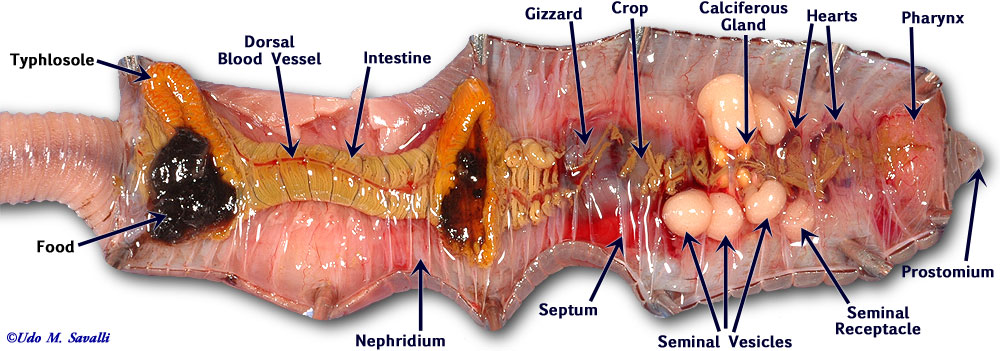
The front end of the worm, the
prostomium (which is found just in front of the mouth), is firm and
pointed, making it easy for them to push their way through the soil
as they eat (Encyclopedia of Life 2013). Worms swallow pieces of dirt and decaying matter, which
then passes through the pharynx (located in body segments one
through six), then
the esophagus (segments six through thirteen), and into the crop where the food is
temporarily stored (Annenberg Learner 2013). The stomach of the worm, also referred to as the
gizzard, is a very strong organ (Annenberg Learner 2013). It grinds up the food and then
moves it to the intestine. The intestine, which extends over
two-thirds of the worm's body length, is where the food is broken
down into usable chemicals, which are then absorbed into the
bloodstream (Encyclopedia of Life 2013). Leftover undigested organic matter and soil particles
pass through the rectum in the form of castings, or simply put, worm
poop. These castings are rich in nutrients, which is the reason why
farmers and gardeners like to have many earthworms in their soil
(Griffith et al. 2013).
Still can't picture just how strong this
earthworm's mouth is? Look at a few short video clips of L.
terrestris eating located
here.
Ever wonder how earthworms breed? Find out
how on the
Reproduction page of this site!
Check out where we gathered our information from on our Reference page

